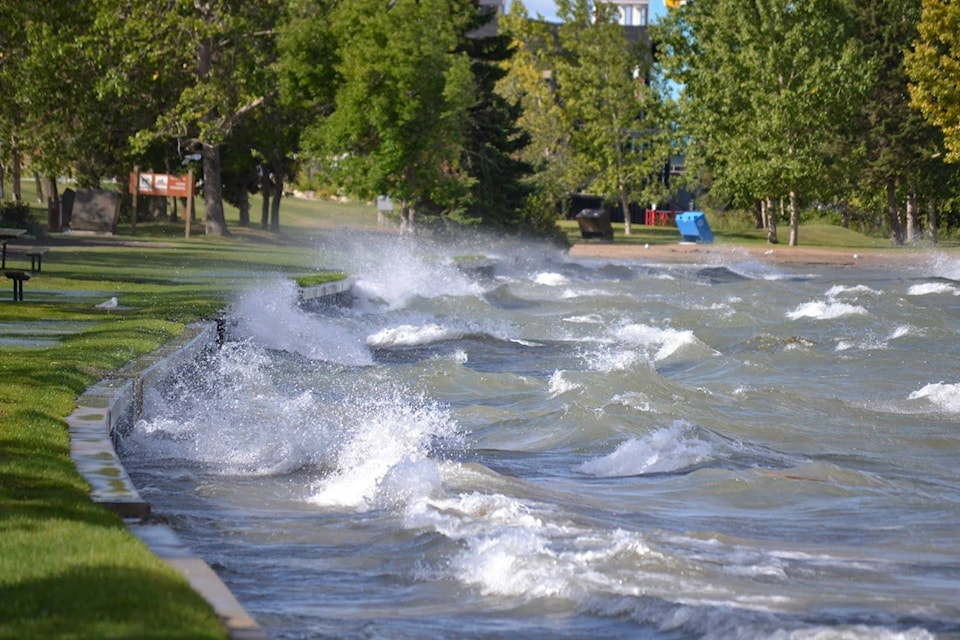Sylvan Lake has seen a lot since the ice sheet melted away 14,000 years ago and filled up the watershed’s bathtub with ice water. In the last two centuries the land surrounding it has been populated by settlers who have logged the forest, farmed and ranched on it, and now find it to be an attractive waterbody for recreation. Municipalities have emerged to create order and to administer land rush frenzies of developers. The incentive is there, as municipal data show that a $10,000 hectare of farmland can be upgraded in value by urban expansion, then the private property taxed on one to three million dollars of assessed value per hectare. If land use management fails to prevent nutrient loading, Sylvan Lake will be exposed to an enhanced risk of eutrophication with a potential penalty to property values of hundreds of millions of dollars.
The Lake has seen well-intended teamwork and rulemaking among municipalities, as intermunicipal development plan initiatives started more than four decades ago. The watershed community’s intent to protect and conserve the environmentally sensitive northwest end of the lake was weakened in the Sylvan Lake Management Plan 2000, a document without statutory authority. It will soon be replaced with a new IDP 2020 for eight municipal partners. It will define and impose common municipal governance on an expanded land area that includes one watershed and parts of two others.
Neither the land, nor the municipalities are compatible. Yet clause 631 (1.1) of the Municipal Government Act is used as justification for forcing a highly asymmetrical partnership in which small urbanized Summer Village communities around the rim of the lake will have disproportionate voices in governance of a much larger land area that is primarily agricultural. All the municipal indicators (land area, population, incomes, expenditures, urban facilities, and derived ratios) show that the Town of Sylvan Lake should dominate the relationship of incompatibles. Two Counties with sparse populations and small percentages (two or three per cent) of their total county land inside the Sylvan Lake watershed attempt to impose their own policies on other IDP 2020 parties.
With that background, we asked The Lake to comment on the recent series of eight stewardship articles contributed to the Sylvan Lake News by the SLWSS. Here is what The Lake has to say about each topic:
Sylvan Lake Water Quality
My self-assessment? I’m looking good. I’m feeling great. I’m in balance with my nutrients and cyanobacteria, but a little short on food chain biomass. I do miss those tangy septic field seepages along Summer Village shorelines. Note to my onshore buddies: I am not your sewer or sump of convenience. Manage your runoff and control high-risk inputs of diffuse-source nutrients from the land, or else I will respond with blue-green algal blooms. Keep the lake Clean. Not Blue-Green.
Sylvan Lake Water Balance
Onshore dudes: Show me that you are applying best-practice water balance analysis and stormwater management technologies. Include mandatory water balance risk analysis in the municipal decision- making process. Enforce water conservation. Tax properties with high impermeable-surface footprints and provide water infiltration incentives to design with permeable surfaces. Landscape the watershed to reduce water loss by evaporation and transpiration. Protect the water balance and my lake water inventory.
Stewardship in the Sylvan Lake Watershed
Help my water quality by identifying and containing high-nutrient-load land runoff at the sources. Keep me healthy with an aquatic biological warfare truce. Prevent me triggering a cyanobacterial eutrophication attack caused by your land use change or shoreline bacterial contamination from bird and animal poop. Prevent threats to human health caused by near-shore e. coli contamination.
Stewardship in Your Future
Demonstrate transparency and accountability in municipal governance. Adopt a Secchi disk test for council chambers just as you test for sunlight penetration into my lake water. Appoint a credible independent competent expert body with the technical tools and power to vet development and population growth plans that elevate the threat of lake eutrophication and groundwater depletion. Compensate the watershed community for marginal environmental risk created by development. Insure private property owners against valuation decline from lake eutrophication. Maintain the watershed groundwater inventory and my underground springs.
Boat Launches and Marine Stewardship on Sylvan Lake
Can’t access the lake? Private property barriers, steep shores and shallow bottoms are sending you a message. Protect fish and bird habitats from the impacts of marauding power boaters. Keep out invasive species hitchhiking on visiting watercraft. Enforce respect for the lake and recognize community standards of conduct. Recognize that the private sector market-based fee for convenient access is $2,500 per year per boat. The Chestermere municipal day-launch fee is $75. Pay up. Golfers do.
It’s Our Lake Too, Eh?
Conserve and protect fish stocks. Prevent more species disappearances and fishocides. Conserve and protect spawning grounds. Repair impaired riparian zones. Restore the shore using contaminant-free riprap boulders and beach materials.
Sylvan Lake Temperatures in Summer and Winter
Connect weather and recreation risk in municipal planning and project justification. Respect my lake power. My whitecaps are my signal for you to clear the beach.
For more lake stewardship tips, visit https://slwss.org
